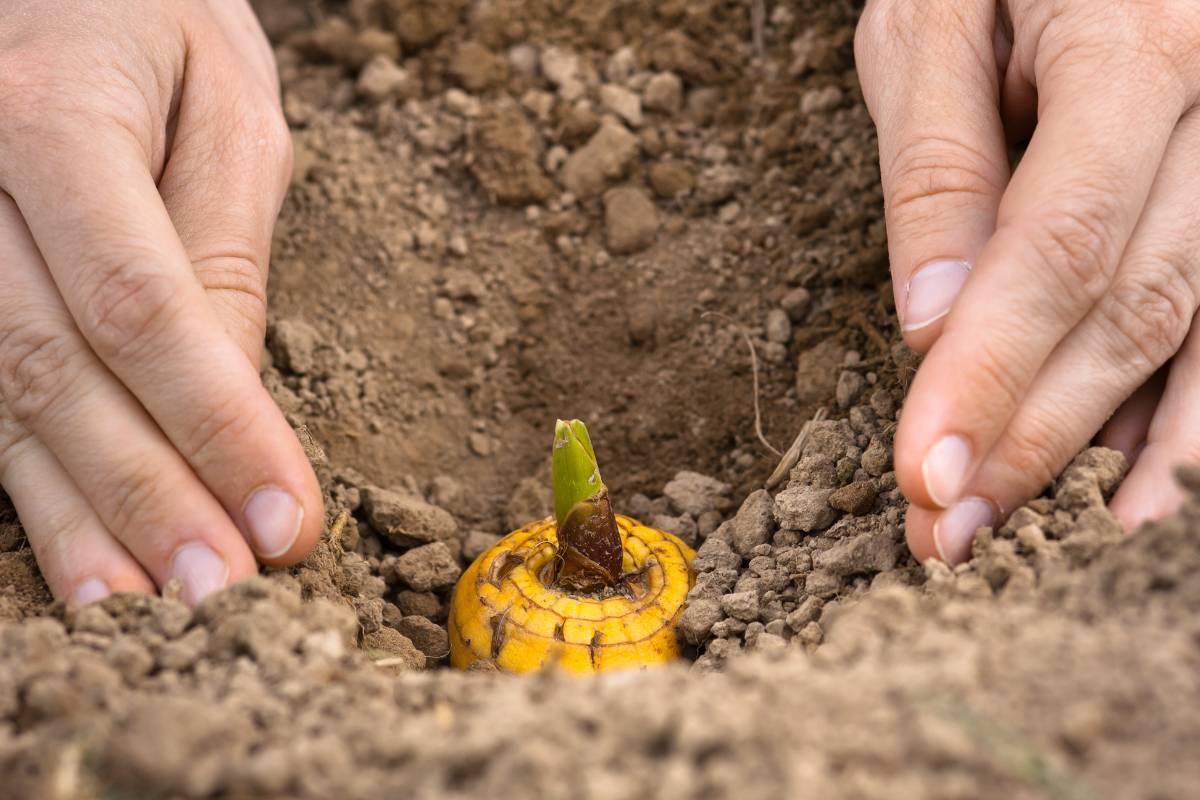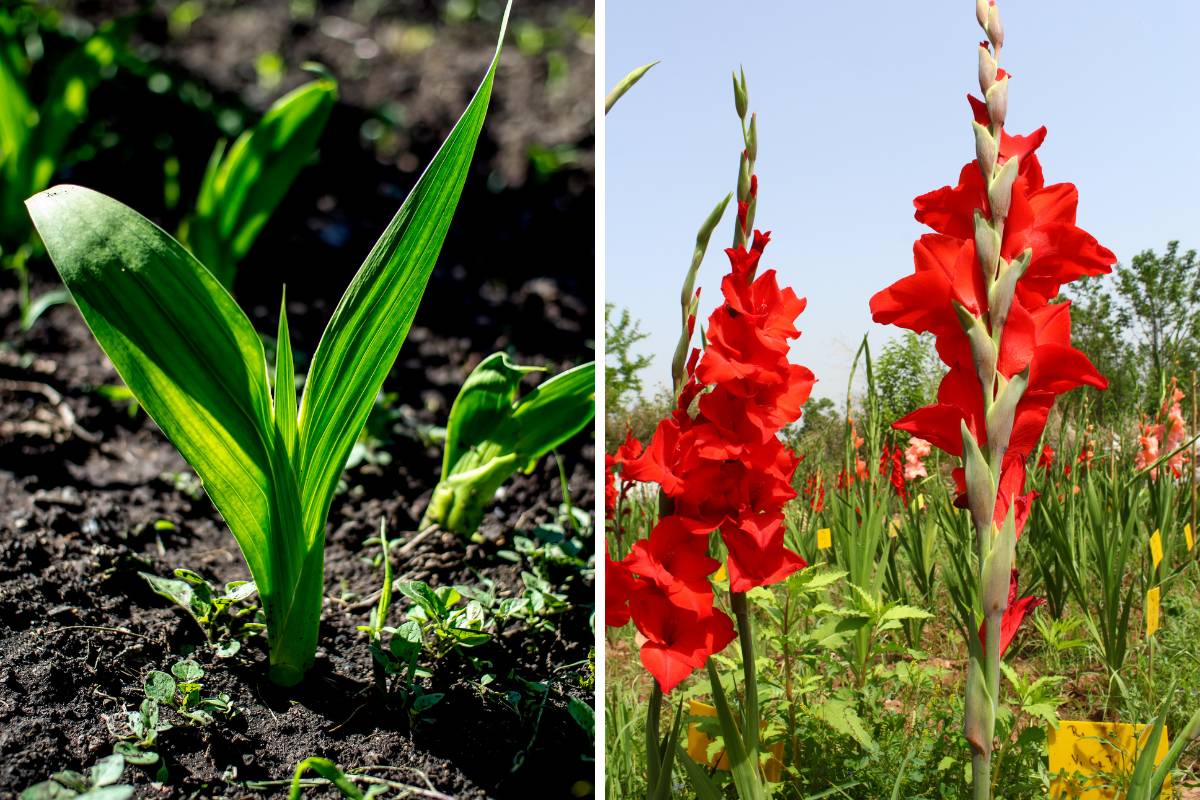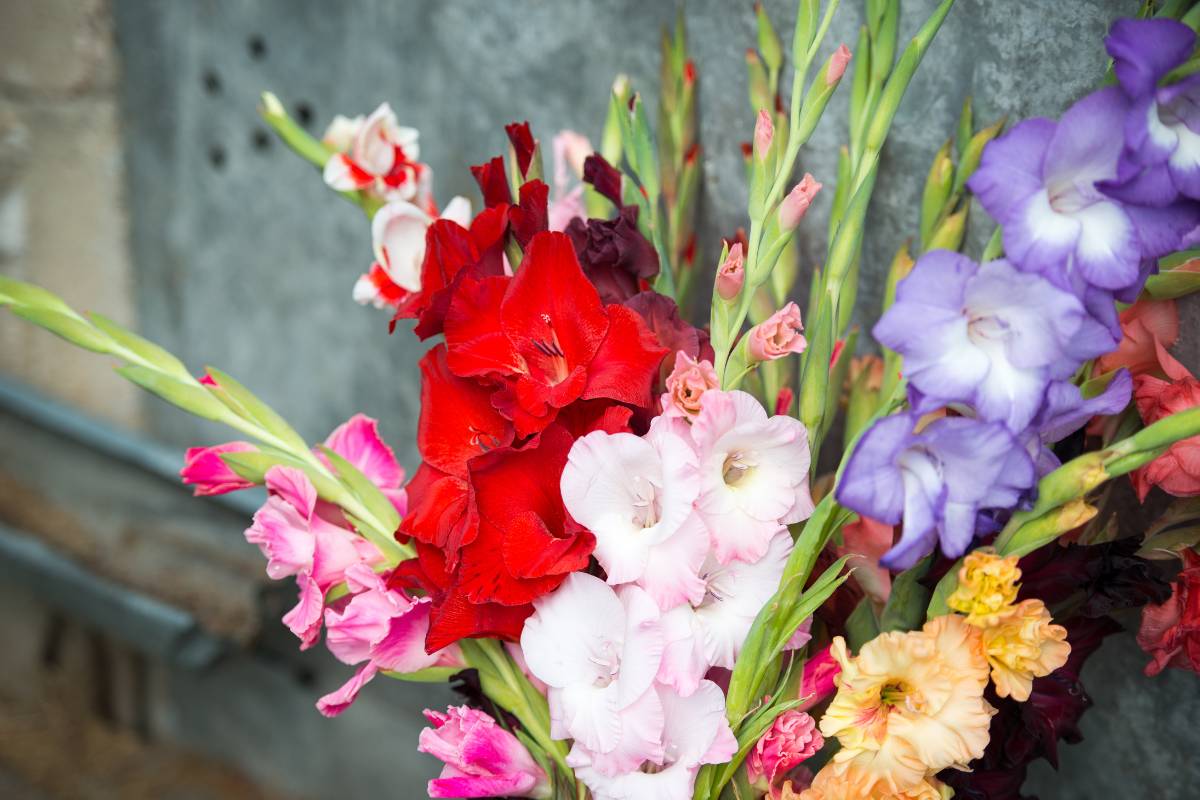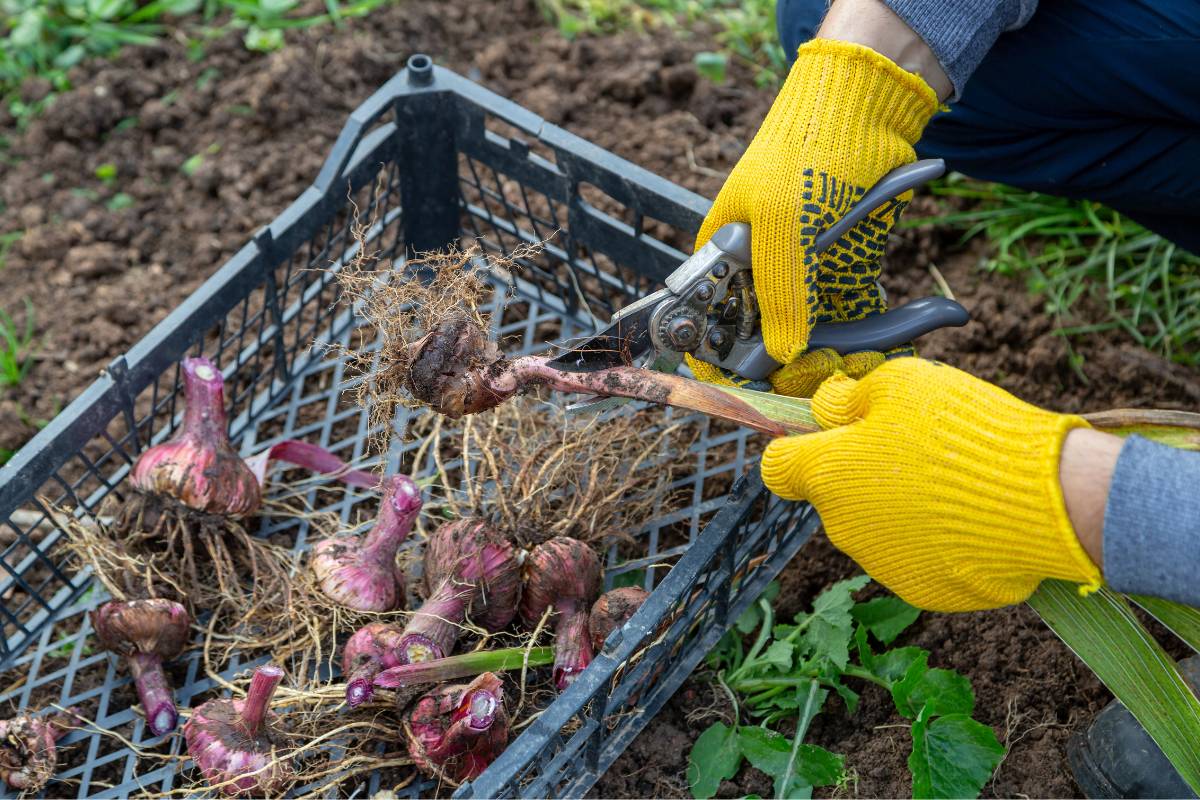Gladiolus, affectionately known as 'glads' or 'gladdies,' have unfortunate associations with gardens from a bygone era and garish - or funerary - floral arrangements. But it's time to take a fresh look at these flamboyant flowers. With their tall spikes of vibrant blooms, gladiolus adds a touch of extravagant glamour to any garden or vase.
Let's dive into the world of gladiolus, uncover some interesting facts, and discover some tips for successfully growing these show-stopping beauties.
Gladioli or Gladiolus?
Let's clear up some confusion right off the bat! Gladiolus belongs to the iris family and its botanical genus is Gladiolus. Gladioli is simply the plural term for more than one gladiolus plant. These perennial plants have their origins in Europe, the Mediterranean, Western Asia and Africa. Today's modern hybrids are the result of some fascinating cross-cultural interbreeding between Mediterranean and South African species, resulting in the large-flowered Gladiolus grandiflorus that’s the most commonly grown in gardens today.
Bulb or Corm?
Though often carelessly referred to as bulbs, gladiolus actually grows from corms, which are thickened underground stems used by plants for food storage. Gladiolus corms are round and flattened, resembling mini berets. Each year, a fresh new corm is produced on top of the old one. The new corm replaces the old one and produces a fresh growing shoot in the following season.
Plants can also produce multiple small corms around their base. These are called cormels, and they can be separated from the parent corm and sown to create new plants. The small size of the cormels means it usually takes two to three years for them to grow large enough to produce flowers.
Gladiolus in the Garden
Gladiolus is a perennial that flaunts tall, one-sided flower spikes, each adorned with numerous individual flowers, known as florets. The flower spikes are available in a remarkable range of colours, including bicoloured combinations, and their petals can have plain, wavy or ruffled edges. The upright long, pointed leaves of gladiolus earned them the nickname ‘sword lilies’.
With their tall, narrow flower spikes, gladiolus is useful in the garden for filling gaps and weaving between shrubs and perennials. It adds height and a vertical element that’s often missing in mixed borders and cottage gardens. Always plant the corms in clumps of at least 5 corms, or randomly scatter them in drifts between established perennials and small shrubs.
While the taller varieties of gladiolus are too big for all but the largest container, smaller species types are available, often called naturalising, cottage or baby gladioli. Their smaller, more dainty flowers are often scented, making them a perfect choice for containers in courtyards or small gardens where the flowers can be admired up close.
5 Top Tips for Growing Gladdies
1. Planting Time
In tropical climates, lucky gardeners can enjoy planting gladiolus year-round. In frost-free warm temperate and subtropical climates, plant gladiolus from June to mid-September, giving corms ample time to establish before summer. In cold climates it's best to wait until August or September to avoid any chance of plants being affected by frost. To enjoy a continuous display of blooms consider succession planting every 3 to 4 weeks.
2. Staking and Support
As you’d expect with something so tall and delicate, gladiolus stems can be damaged when faced with strong winds. To keep them standing tall, it's best to plant them in a sheltered position. Stems can be supported by mounding soil up around the stems as they grow. Taller stems may still need to be staked. Use thin bamboo canes which can be hidden behind the flower stems and tie the plants with a soft tie at 20cm intervals.
3. Cutting Flowers
Gladiolus florets open from the bottom of the flower spike to the top. To harvest blooms for your bouquets, cut the stems when the lowest floret has just started to open. This way, the remaining buds will continue to open up the stem, ensuring a long-lasting display in your home.
4. Caring for Cut Flowers
Some florists prune off the tip of the flower spike to encourage the lower blooms to open. This takes away some of the airy movement of the stems, but it’s an option if the spikes are too long or if they begin to bend or wilt.
As the upper florets open the lower ones will begin to fade. Pinch out spent florets to keep the stems looking their best for longer.
5. Lifting Corms
In frost-free climates gladiolus can be left undisturbed to naturalise, adding bursts of colour year after year. If clumps become crowded, corms can be lifted and separated.
In climates with occasional mild frosts, applying a thick layer of mulch in winter can protect corms enough that they can be left in the ground. In frosty cold climates, however, it’s best to lift corms for safekeeping. When lifting, let the corms cure on a wire rack or crate outside for around two weeks. Bid farewell to the old, shrivelled corms and keep the fresh, plump ones for planting. You can also divide and plant the cormels, though they need a little patience to mature and flower—nature's slow fashionistas!
So unleash your creativity and let gladiolus grace your garden - it’s one of the true divas of the botanical world.









